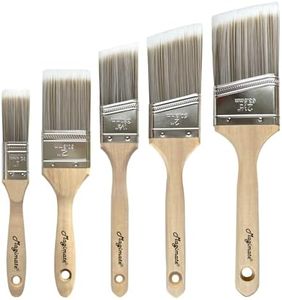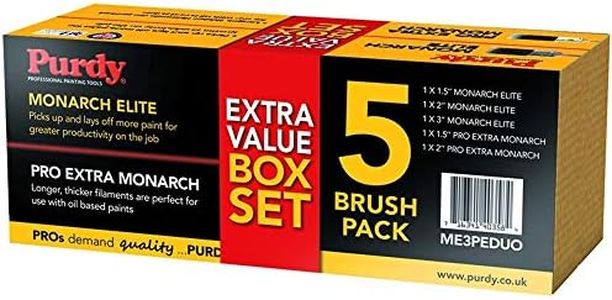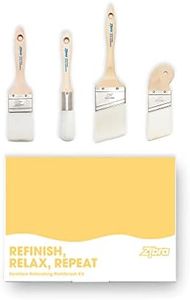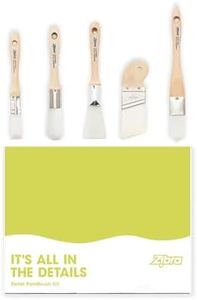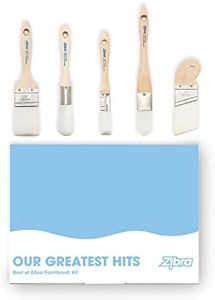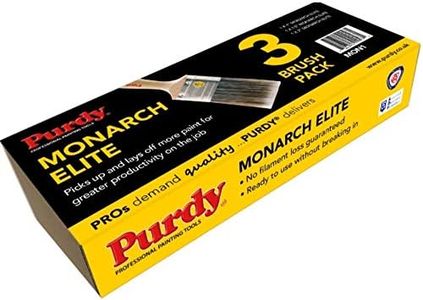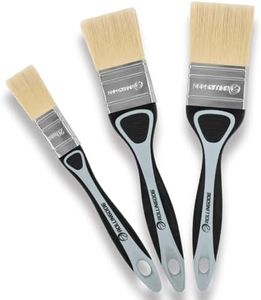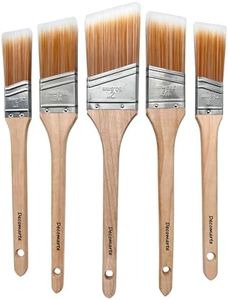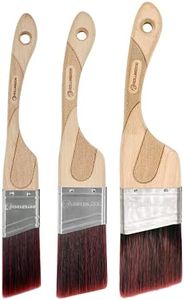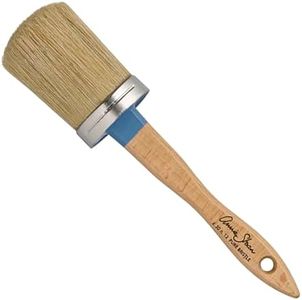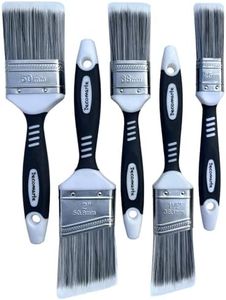We Use CookiesWe use cookies to enhance the security, performance,
functionality and for analytical and promotional activities. By continuing to browse this site you
are agreeing to our privacy policy
10 Best Paint Brush For Furniture
From leading brands and best sellers available on the web.Buying Guide for the Best Paint Brush For Furniture
Choosing the right paint brush for furniture is essential for achieving a smooth, even finish and making your painting project easier and more enjoyable. With so many options available, it’s important to focus on a few key characteristics that affect how the brush performs. By understanding these features, you can select a brush that matches your project and painting style, resulting in better results and less frustration.Brush SizeBrush size refers to the width of the brush and directly influences how much area you can cover at one time. Smaller brushes (typically 1 to 1.5 inches) are ideal for detailed or intricate work, like corners or furniture with lots of edges and grooves. Medium-sized brushes (2 to 2.5 inches) are versatile and suitable for most chair, dresser, or table surfaces. Larger brushes (3 inches and up) are suited to big, flat areas and large pieces like wardrobes or desks. Think about the size of your furniture and the level of detail—choose a small brush for fine work, a medium for general projects, and a large one for big, flat surfaces.
Bristle TypeBristles can be natural (such as animal hair) or synthetic (like nylon or polyester). Natural bristles hold paint well and provide a smooth finish, especially with oil-based paints, but can absorb water and become limp when used with water-based paints. Synthetic bristles are better for water-based (latex, acrylic, chalk) paints because they don’t absorb water and keep their shape. For most furniture painting projects today—especially with water-based paints—synthetic bristles are recommended as they’re easier to clean and provide a sharp edge for precise painting.
Brush ShapePaint brushes come in several shapes: flat, angled (also called sash), and round. Flat brushes cover large, even areas quickly and are great for the broad surfaces of furniture. Angled brushes help get into corners and paint straight edges and smaller details, thanks to their slanted tip. Round brushes are useful for spindles, legs, and carved details. Consider the shape of your furniture—flat brushes for flat areas, angled for tight spots and edges, and round for intricate parts.
Bristle FirmnessBristle firmness, sometimes called stiffness, affects how much control you have over the paint. Soft bristles are good for smoothing paints and creating a smooth finish, while firm bristles help you push paint into cracks and textured areas. If your furniture has lots of flat surfaces and you want a glass-like finish, choose soft or medium-soft bristles. If you’re working with ornate, rough, or textured furniture, firm bristles can help you reach all the nooks and crannies.
Handle DesignHandles vary in length and shape, affecting comfort and control. Long handles can give you more reach and are good for large furniture or when you need leverage for harder-to-reach areas. Short handles provide control for detail work or when you need to get close to the surface. Ergonomic or contoured handles can be easier on your hand, especially during long painting sessions. If you’ll be spending a lot of time on your project, try to pick a brush that feels comfortable in your hand and matches the type of work you’re doing.
